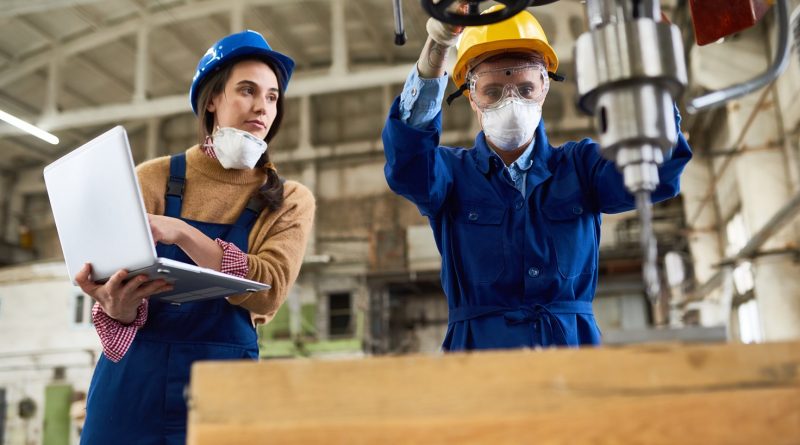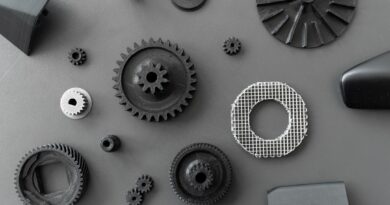11 Strategies Driving the Future of Manufacturing Work
The manufacturing industry is going through a monumental transformation of late, thanks in large part to the epic technological advancements and shifts occurring within the global economic landscape; To stay meaningfully competitive, manufacturers are embracing a variety of strategies aimed at boosting efficiency, lowering costs, and improving product quality.
Here are some of the key strategies that are shaping the future of manufacturing work:
1. Integration of Advanced Robotics
Advanced robotics technology is revolutionizing the manufacturing floor. Robots are increasingly capable of performing complex tasks with high precision and at speeds unmatchable by human workers; this not only boosts productivity but also improves workplace safety by handling dangerous tasks, ultimately leading to a more efficient production line. Case studies, such as those from leading automotive manufacturers, show a 50% reduction in production time through the use of robotics.
2. Implementation of the Internet of Things (IoT)
IoT technology enables smarter manufacturing processes. By equipping machines with sensors, manufacturers can collect and analyze vast amounts of data in real time. This allows for predictive maintenance, improved supply chain management, and better quality control, leading to decreased downtime and increased operational efficiency; for example, General Electric has seen a 20% improvement in asset performance through its Predix platform.
3. Adoption of 3D Printing
3D printing is shifting the dynamics of manufacturing, particularly in prototype development and small-batch production. This technology allows for rapid prototyping, custom manufacturing, and complex designs that are not possible with traditional methods – the result of which is a significant reduction in the time and cost associated with product development.
4. Emphasis on Sustainability
Sustainability has become a crucial aspect of modern manufacturing. Companies are increasingly adopting eco-friendly practices and materials to reduce their carbon footprint; this includes optimizing energy use, minimizing waste through circular economy practices, and using sustainable materials, which not only help the environment but also appeal to the eco-conscious consumer.
5. Leveraging Artificial Intelligence (AI)
AI is transforming manufacturing from production planning to quality control. Through the magic of machine learning algorithms, AI systems can predict market trends, optimize production processes, and drastically enhance decision-making; it also plays a crucial role in quality assurance, identifying defects that are imperceptible to the human eye.
6. Enhanced Human-Machine Interaction
As robots and AI systems become more prevalent, the role of the human worker is evolving. Manufacturers are focusing on augmenting human abilities with machines rather than replacing them; this includes using exoskeletons to aid workers in heavy lifting, and AR glasses to provide real-time information, all with the express aim of enhancing productivity and reducing errors.
7. Shift Towards Customization
The demand for personalized products is driving manufacturers to adopt flexible production systems that can handle customization without sacrificing efficiency; this approach often involves modular designs and computer-controlled processes that can be easily adjusted to meet individual customer specifications.
8. Investment in Skills Development
With the (seemingly constant) introduction of new technologies, there is an ever-growing need for skilled workers who can operate and maintain sophisticated machinery. Consequently, progressive manufacturers are investing in continuous training and development programs to ensure their workforce can meet the ever-evolving demands of a technologically advanced manufacturing environment.
9. Global Supply Chain Optimization
In such a hyper-interconnected world, optimizing the supply chain is vital for manufacturing success. Consequently, manufacturers are leveraging global networks, advanced logistics technologies, and strategic partnerships to ensure efficiency and minimize disruptions in the supply chain.
10. Adaptive Manufacturing Systems
To respond quickly to market changes and challenges, manufacturers are adopting adaptive manufacturing systems. These systems use real-time data and flexible production techniques to adjust processes on the fly, which, in turn, helps manufacturers to stay resilient in the face of many challenges, such as supply chain disruptions or sudden shifts in market demand.
11. Continuous Improvement through Lean Manufacturing
Largely influenced by the principles of lean manufacturing, continuous improvement is a cornerstone of modern manufacturing strategies. The ‘continuous improvement in manufacturing’ approach focuses on minimizing waste without sacrificing productivity, with manufacturers implementing continuous improvement by regularly analyzing their operations, seeking feedback from stakeholders, and using data-driven insights to refine processes. Tools such as Kaizen – which involves employees at all levels in problem-solving – and Six Sigma – which uses statistical methods to improve quality and reduce defects -, are fundamental to this strategy; the impact is profound, often leading to significant enhancements in product quality, customer satisfaction, and operational efficiency. For example, Toyota’s implementation of the Kaizen philosophy has made it a global leader in automotive manufacturing by not only enhancing efficiency but also fostering a culture of teamwork and innovation. This strategy ensures that manufacturing operations can adapt to new challenges and technologies while continually improving overall performance.
Future Trends and Challenges
The future of manufacturing is likely to see even greater integration of AI and robotics, with the potential rise of fully automated factories. However, this transition poses significant challenges, including the displacement of jobs and the need for new skill sets. Manufacturers must also navigate the complexities of cyber-security risks associated with increased digitalization.
Final Thoughts
These strategies reflect the dynamic nature of the manufacturing industry today and underscore the sector’s adaptability and forward-thinking approach. As these trends continue to evolve, they will undoubtedly create new opportunities and challenges in the world of manufacturing. Manufacturers who adapt quickly to these changes while addressing the associated challenges head-on will be the ones to lead the future of the industry.















